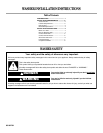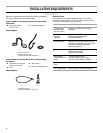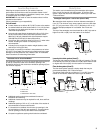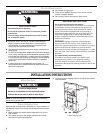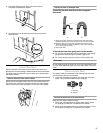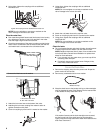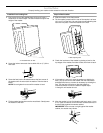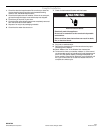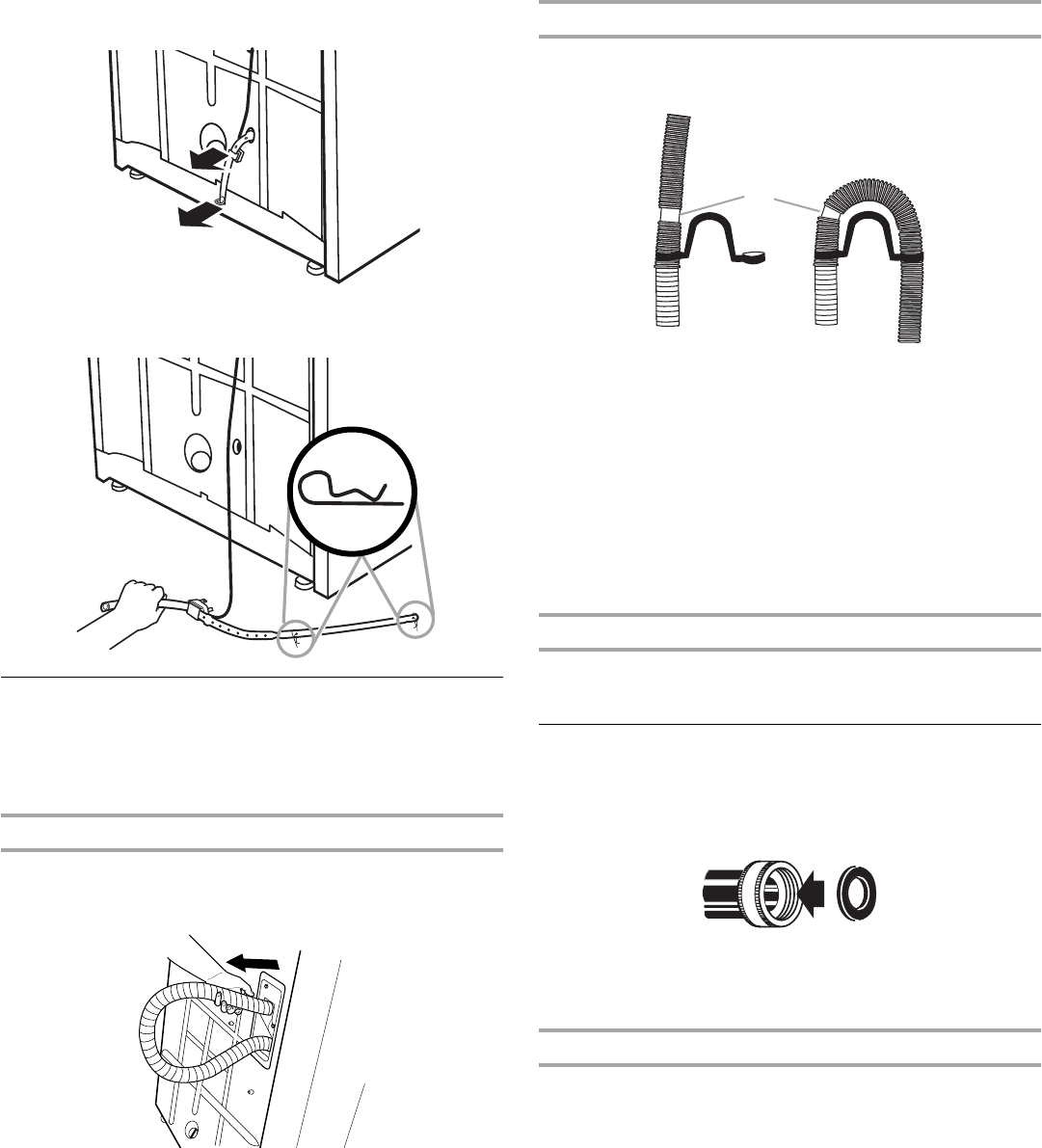
5
4. Pull yellow shipping strap firmly, until both ends are
completely removed from washer.
5. Check that the two (2) cotter pins were removed with the
shipping strap.
Connect Drain Hose
Proper connection of the drain hose protects your floors from
damage due to water leakage. Read and follow these instructions.
The drain hose is connected to your washer and is stored inside
the washer cabinet.
Remove drain hose from washer cabinet
Gently pull the corrugated drain hose out of the washer from the
top of the hose. Continue to pull the hose until the end emerges.
Do not force excess drain hose back into the rear of the washer.
Laundry tub drain or standpipe drain
Connecting the drain hose form to the corrugated
drain hose
To keep drain water from going back into the washer:
■ Do not force excess drain hose into standpipe. Hose should
be secure but loose enough to provide a gap for air.
■ Do not lay excess hose on the bottom of the laundry tub.
Floor drain
Do not install the drain hose form on to the corrugated drain hose.
You may need additional parts. See Floor drain under “Tools and
Parts.”
Connect the Inlet Hoses
The washer must be connected to the water faucets using the
new inlet hoses. Do not use old hoses.
1. Insert new flat washers (supplied) into each end of the inlet
hoses. Firmly seat the washers in the couplings.
Connect the inlet hoses to the water faucets
Make sure the washer basket is empty.
1. Attach the hose labeled hot to the hot water faucet. Screw
on coupling by hand until it is seated on the washer.
2. Attach the hose labeled cold to the cold water faucet. Screw
on coupling by hand until it is seated on the washer.
A. Place end of drain hose form around hose at drain hose relief.
Squeeze the latch of the drain hose form until it snaps into place.
B.Place the other end of the drain hose form around one of the
remaining drain hose reliefs. Squeeze the latch of the drain hose
form until it snaps into place.
C. Drain hose relief
A. Coupling
B. Washer
AB
C
AB



